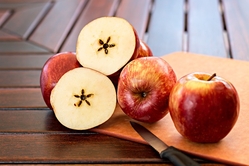Cooking Lessons, Ideas, Activities, Recipes, and Resources for Teaching "Jesus' Birth Through the Eyes of the Wise Men" in Sunday School.
Post your Sunday School cooking lessons, ideas, activities, and resources for "Jesus' Birth Through the Eyes of the Wisemen, Magi" here. (Photos are much appreciated!)
In addition to all our public lesson ideas, the Rotation.org Writing Team has written a wonderful Magi lesson set that includes a detailed King Cake cooking lesson plan - free to our wonderful Supporting Members - join today!
Jesus' Birth through the Eyes of the Wise men
Cooking Workshop
Summary of Lesson Activities:
Kitchen lesson where students use their "gifts" to complete an impossible task (making sandwiches and parfaits), based on the gift of the fourth wise man). This lesson draws on the Henry Van Dyke story of "The Other Wise Man." See this video lesson for more information on the story and videos you can share if you have time.
Scripture Reference:
Matthew 2:1-12
Leader Preparation:
- Read the scripture ahead of time.
- Gather the materials. (Be sure to check on allergies of your students and change the snack to be made and shared if necessary.)
- Make up the bags and put them on a table in sight when the kids come into the room.
- During the lesson you will choose a child who is good at “drama” for a "special assignment.” Explain privately in advance to your dramatic student the gist of the exercise and ask them to put on a good show of being upset that they have been given an impossible assignment.
Materials List:
- Brown lunch bags with “gift” items in them- ingredients in the list below and also random objects - at least one bag per student:
- some bread
- plastic knife
- small jar of peanut butter
- small jar of jelly
- paper towels
- small plates
- small plastic cups
- granola
- bananas
- flavored yogurt
- spoons
- To each bag, add 3 or 4 random items that will not be needed to complete the assignment such as note paper, a silk flower, paper clips, bells, ribbons, candles, etc.
- Small printed inventory forms. These can be simple lined paper with numbers for the kids to fill out.
- Pencils or Pens
- 1 paper with the “assignment” and instructions for making the sandwiches and parfaits.
Lesson
Opening- Welcome and Lesson Introduction
Greet the children and introduce yourself and any helpers that you have.
Explain that today you will be exploring the story of the Wise Men and gifts -- not only the gifts of the Wise Men but also gifts that we can give to Jesus and others.
Dig- Main Content
Read the scripture. Wonder why the wise men wanted to bring wanted to bring gifts to someone they did not know.
Explain that there are stories people have made up about others who might have tried to bring gifts to the new king. Briefly share the story of "The Other Wise Man by Henry Van Dyke. Be sure to discuss Artaban’s saving of the child in Bethlehem. Talk about what his original plan for the ruby was and why he decided to give it to the Soldier instead of to Jesus.
Ask for a volunteer for a special project and choose your preselected child. Give him or her a piece of paper with the instructions for the snacks and tell the preselected "dramatic" child (so that the others can hear) that they must complete the assignment in a given time period or face the consequences (un-named). Send your dramatic student to the far side of the class to “work on their assignment.” (Their assignment will be to make peanut butter and jelly sandwiches and yogurt parfaits for the rest of the class.)
With the rest of the students, begin a class discussion. Give all of the other children a brown paper bag containing several "gifts." Pass out inventory sheets and have them make an inventory of the gifts they have in their bags and think about how they could use them to help other people.
While you are having that discussion, the student at the other end of the room should be whining and fussing loudly that their assignment is impossible. Eventually, call that student over and have them explain what they are whining about. Act annoyed with them and in an exasperated voice, ask if any of the children can help that student complete their task. Let the kids figure out that they all have a “gift” to offer that will complete the assignment. Allow them to work together to make the snacks.
Parfait Directions: In a plastic cup place a couple of spoons of granola. Top that with sliced bananas. Top the bananas with some yogurt. Top the yogurt with a sprinkling of the granola.
Sandwich directions: spread peanut butter on one slice of bread and jelly on another. Put the two together and then cut into smaller pieces for sharing.
Reflection
While the kids enjoy their snacks, talk to them about what Jesus meant by loving your neighbor. Your neighbor is the person physically closest to you. You love them by finding out their needs and using your gifts to help them. Tell them that Jesus gives us all different gifts. We may not always have in our “inventory” what our neighbor needs but we must be aware of our gifts and be ready to use them in service to others when they are needed.
Let them brainstorm other “gifts” in their personal inventory that can be used as a Servant of Jesus. Suggest that their gifts might include:
- Excellent eye sight to help mom or dad find something small that has fallen on the floor, like an earring back or a small screw.
- The ability to run quickly to get something needed, like a diaper for a younger sibling or a pencil when mom is on the phone.
- Make your siblings laugh or entertain them in the car so that your parents can concentrate on driving.
- Time at the end of the day to help your teacher push the chairs in or tidy the class room.
- Use your strength to hold the door for someone who has their hands full.
Closing
Have the children help one another to clean up after their snack.
Close with a sentence prayer having each child give thanks for one of their gifts.
A Sunday School lesson written by Snix, rotation member.










